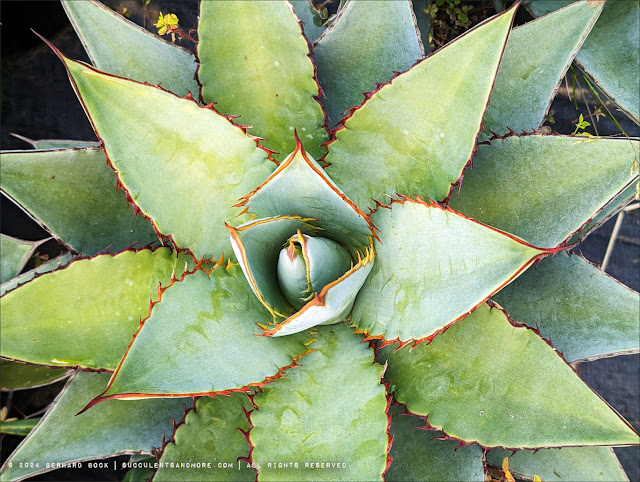Holly Krock's organic approach to treating agave mites

Everybody knows what aphids and mealybugs are and what a pest (literally) they can be. But many gardeners, including succulent collectors, have never heard of agave mites. Ignorance is bliss, until something like this shows up on an agave or mangave: Photo © 2023 Ben Faber | https://ucanr.edu/blogs/blogcore/postdetail.cfm?postnum=57252 The smudges that look like someone dragged a thumb dipped in grease across the leaf surface, and the scar-like lesions, are classic signs of an agave mite infestation. Agave mites, also known as grease mites (appropriate!), are tiny critters in the family Eriophyidae . Adults are around 1/3 mm long, and their eggs are around 20 microns wide (that's 0.0008 inches). For comparison, a human hair has a thickness of approximately 70 microns, so the eggs of agave mites are 3× smaller. If the infestation is mild, the symptoms may seem purely cosmetic. Why worry, you might wonder, when agaves planted in the ground get all kinds of nicks and dings as a ...



